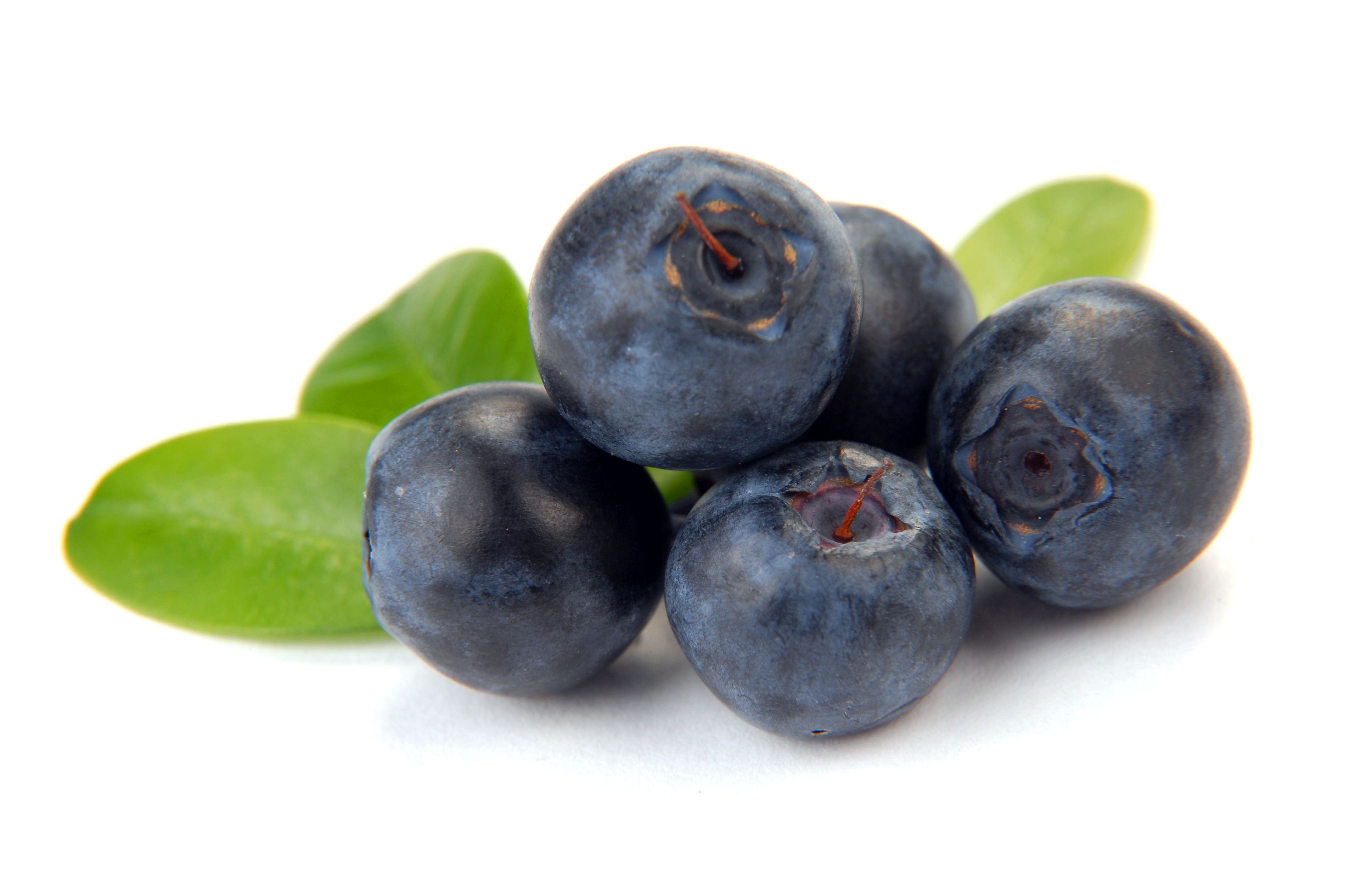The FACTS on FATS
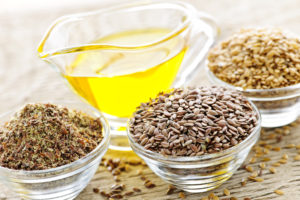
As a health coach and cooking instructor, the most common questions I am asked are about the role of FATS in the diet. With all of the craze about Ketogenic diets, Paleo diets, low-fat diets, and controversy about coconut oil, it can get SO confusing!!
The goal of this blog post is to provide an overview on the types of fats as well as a guide for you to make informed decisions about the types and amounts of fats you need each day.
All fats from nature are inherently GOOD.
Well, all foods from nature – in their whole form – are good – this includes fats. In the proper proportions, fats have many important health benefits.
- Fats are found in both plants and animals.
- Fats can be saturated or unsaturated. Further, they can be monounsaturated OR polyunsaturated.
- There are omega 3, omega 6, and omega 9 fatty acids.
Manufactured fats: Trans fats & Hydrogenated Vegetable Oils
The only “bad” or dangerous fats are hydrogenated or partially hydrogenated oils, which create trans fats. Manufacturers chemically manipulate the structure of liquid vegetable oils in order to make foods creamier, extend shelf life, and enhance flavor. Trans fats make up 60% of the fat in processed foods containing hydrogenated vegetable oils (think: most cakes, cookies, pie crusts, store-bought frosting, and crackers, which are very often made from shortening) (WebMD, 2018). Shortening is made from primarily hydrogenated vegetable oils and often margarine – check the ingredient labels for the word “hydrogenated.”
Saturated Fats: Moderation is Key
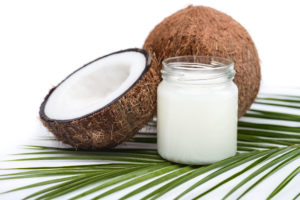
Saturated fats are typically solid at room temperature.
Benefits: critical for hormone production, cell membrane structure, heart health, and immune function.
Recommended amount: aim for 5-6% of your daily fat intake to come from saturated fats.
Too much saturated fat intake has been linked to an increased risk of developing high blood pressure, atherosclerosis, high cholesterol, and an increased risk for diabetes.
Too little saturated fat intake can lead to unbalanced blood lipids and cholesterol and hormone dysregulation.

Food Sources:
- coconut oil
- eggs
- butter
- red meats
- organ meats
- palm oil
Unsaturated fats: Eat them Up!
Monounsaturated & Polyunsaturated
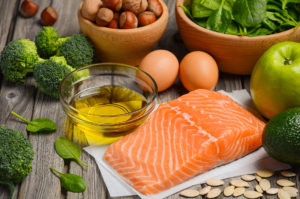
Most foods contain a combination of Monounsaturated & Polyunsaturated fatty acids.
For example, 1 tbsp of olive oil has:
9.8 grams of Monounsaturated fatty acids (Omega 9 fatty acids)
1.4 grams of Polyunsaturated fatty acids (~0.1 grams of Omega 3, ~1.3 grams of Omega 6)
***Monounsaturated fatty acids (MUFA) contain Omega 9 fatty acids***

Monounsaturated oils are liquid at room temperature (ex: olive oil).
Benefits: lowers LDL (bad) cholesterol, supports heart health, breaks down triglycerides (fats) for energy, supports cell membrane function
Food Sources:
- olive oil
- avocado
- sesame seeds
- sesame oil
- grapeseed oil
- hazelnuts
- brazil nuts
- canola oil
***Polyunsaturated fatty acids (PUFA) contain Omega 6 & Omega 3 fatty acids***
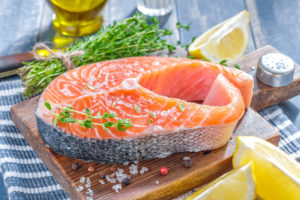
For optimal health, you should aim to eat these fatty acids in the proper ratio!!!!!
Omega 6 : Omega 3
Ratio should range between 4:1 to 1:1
Eating too many omega 6 fatty acids is NOT healthy – it increases inflammation in the body, which leads to premature aging, cancer, heart disease, blood clots, and a weakened immune system.
Dr. Weil explains,
“omega-6 foods … are numerous in modern diets. They are found in seeds and nuts, and the oils extracted from them. Refined vegetable oils, such as soy oil, are used in most of the snack foods, cookies, crackers, and sweets in the American diet as well as in fast food. Soybean oil alone is now so ubiquitous in fast foods and processed foods that an astounding 20 percent of the calories in the American diet are estimated to come from this single source.” (Weil, 2007)
“Many nutrition experts believe that before we relied so heavily on processed foods, humans consumed omega-3 and omega-6 fatty acids in roughly equal amounts. But to our great detriment, most North Americans and Europeans now get far too much of the omega-6s and not enough of the omega-3s. This dietary imbalance may explain the rise of such diseases as asthma, coronary heart disease, many forms of cancer, autoimmunity and neurodegenerative diseases, all of which are believed to stem from inflammation in the body. The imbalance between omega-3 and omega-6 fatty acids may also contribute to obesity, depression, dyslexia, hyperactivity and even a tendency toward violence. Bringing the fats into proper proportion may actually relieve those conditions…” (Weil, 2007)
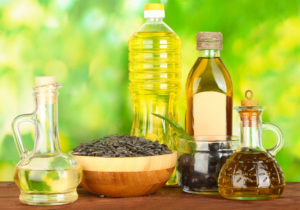
Omega 6 Sources: nuts, seeds and the oils extracted from them
- safflower oil
- sunflower seeds
- sunflower oil
- grapeseed oil
- pine nuts
- pistachios
- hemp seeds, hemp seed oil
- corn oil
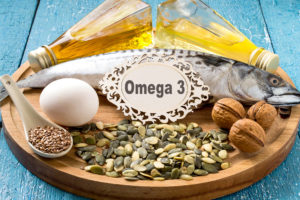
Omega 3 Sources: coldwater fish, flax, chia, walnuts, cod liver oil, some fruits & vegetables (blueberries, kale)
- walnuts
- flaxseeds
- chia seeds
- salmon
- sardines
- pumpkin seeds
- omega 3 enriched eggs
- soybeans
- albacore tuna
Benefits: Omega 3’s are nutritional powerhouses, with benefits including:
- reducing inflammation
- normalizing blood pressure
- preventing blood clots
- improving insulin resistance (especially for people with diabetes)
- lowering triglycerides
- supporting joint health
- supporting the immune system
- supporting brain function
How to balance your fats:
-
Eat a plant-based diet.
Since the majority of animal foods contain saturated fats and the majority of plant foods contain unsaturated fats, when most of your diet is comprised of plants, you will automatically be eating more monounsaturated and polyunsaturated fats! Try to save animal foods for special occasions (holidays, celebrations, some weekends) and focus on plant-based meals, which can often be cheaper & more nutrient-dense!
2. Avoid processed foods, Eat WHOLE FOODS!
According to Dr. Weil,
“…you can cut down on omega-6 levels by reducing consumption of processed and fast foods and polyunsaturated vegetable oils (corn, sunflower, safflower, soy, and cottonseed, for example). At home, use extra virgin olive oil for cooking and in salad dressings. Eat more oily fish or take fish oil supplements, walnuts, flax seeds, and omega-3 fortified eggs. Your body and mind will thank you.” (Weil, 2007)
If you’re looking for some meal prep inspiration, join me at The Crescent Olive, Columbia’s olive oil store for our monthly cooking classes, featuring their premium infused olive oils & vinegars. Sit back and relax with a glass of wine as I show you how to prepare delicious food in a healthy way! Receive recipe cards, health tips, a full dinner, and a 15% discount on the products used at that evening’s class!
Each class starts promptly at 6:00 pm at The Crescent Olive!
$35 per person, call 803-771-7774 to reserve your spot!
For more information, visit my Cooking Classes webpage!

References
WebMD. (2018). What are trans fats? Retrieved from https://www.webmd.com/cholesterol-management/qa/what-are-trans-fats
Weil, A. (2007). Balancing omega-3 and omega-6? Retrieved from https://www.drweil.com/vitamins-supplements-herbs/vitamins/balancing-omega-3-and-omega-6/
